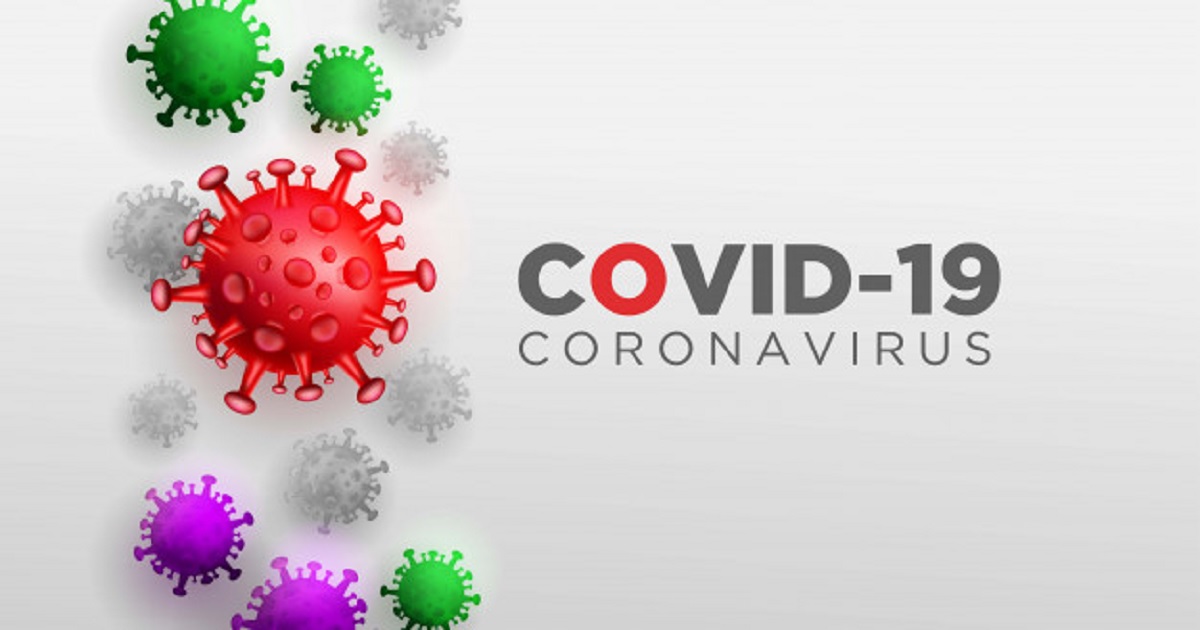
Government Business, Government Finance
Article | July 12, 2022
We know that an infrastructure bill is coming, and the debate in Congress will likely begin in July. Industry leaders, public officials, think tanks, and economic development organizations have provided lots of input. They know that some of their messages have been heard.
There is no consensus between Democrats and Republicans about how the bill will be structured, but one thing appears certain – Congress must deliver an economic recovery bill. Because infrastructure is considered to be the quickest route to economic recovery, it is safe to assume that large amounts of funding will be allocated to infrastructure projects. Depending on how the final infrastructure bill is structured, the funding could come completely from government or it could be delivered from various types of alternative funding sources.
And, when an infrastructure bill passes, it will almost certainly include funding for the country’s seaports. That’s because America’s sea and inland ports are essential cogs in the country’s economic recovery. Ports have played an incredibly important role in our short-term emergency response to COVID-19. The delivery of vital commodities and products reached recipients through ports. And, despite very difficult times, a vast majority of ports managed to remain open to cargo operations.
Data is always lagging but according to the American Association of Port Authorities, cargo activities at U.S. seaports accounted for 26 percent of the U.S. economy in 2018. A study released by the organization outlines approximately $5.4 trillion in total economic activity and more than $378 billion in federal, state, and local taxes that resulted from economic activity related to ports.
The anticipation of large amounts of revenue through an infrastructure bill is encouraging, but the reality is that there’s already a great amount of activity at most seaports. Planning documents have been completed or updated and contracting opportunities are abundant. Additionally, the potential for public-private partnerships is great.
Florida
The world’s third largest cruise port, Port Everglades, recently received approval from the Broward County Board of County Commissioners for its 20-Year Master/Vision Plan. The county manages the port’s operations, and the plan outlines 50 projects for delivery through 2028. Currently, the projects are projected to cost approximately $3.02 billion. Immediate opportunities include: Terminal 21 redevelopment at a cost of $124 million; the Ro-Ro Yard relocation and expansion for $10 million; upgrades to the Entrance Channel North Wall for $12 million; and other projects estimated at $26 million.
California
The Los Angeles Board of Harbor Commissioners has approved a $1.5 billion budget for Fiscal Year 2020-2021 that includes a $163.6 million capital improvement plan that provides funding for numerous terminal upgrades. Projects include an allocation of $38.1 million for improvements at the Everport Container Terminal and a $4.8 million project designated for the Pasha Terminal. The port’s waterfront public access projects include work at the San Pedro Public Market estimated at approximately $42.3 million. Smaller projects are set for the Wilmington Waterfront Promenade. Security related projects, whichinclude the development of a Port Cyber Resilience Center, are funded at $7.8 million. This port is considered to be North America’s leading seaport by container volume and cargo value, and it facilitated $276 billion in trade during 2019.
Oklahoma
The U.S. Department of Transportation in June awarded a $6.1 million grant to the Tulsa-Rogers County Port Authority for the Tulsa Port of Catoosa. Funding was obtained from the federal Infrastructure for Rebuilding America (INFRA) Program. which provides approximately 50 percent of funding for projects such as the port’s rail switching project. Work will include the improvement of an existing 3-mile industrial rail spur. The completed project is estimated to cost $12.1 million. In 2019, the Public Service Company of Oklahoma entrusted the Tulsa Port Authority with future development of the Inola industrial site by granting an historic land transfer of 2,000 acres. In May 2020, a firm was hired to process survey data so that the project could move forward.
Ohio
A $16 million federal grant was received recently by the Toledo-Lucas County Port Authority. The revenue is designated for a project that will receive an additional $4 million to rebuild and upgrade a mile-long dock wall. The dock-wall reconstruction is expected to take three years to complete and will be done in phases so that port operations can continue unabated. About $6 million of the funding is allocated for construction of a bulk-liquid transfer and storage facility. Currently, the port authority cannot perform liquid cargo movements, but the completion of this project will remedy that as well as allow for multiple sources of commodities.
Texas
The Port of Houston Authority was recently awarded $79.5 million in federal funding to improve 2,700 linear feet of wharf and upgrade 84 acres of yard space at the Barbours Cut Container Terminal. Total cost of the project is $198.7 million. The upgrades will reduce ship delay by providing additional berthing capacity and will decrease truck turn times, idling, and congestion. The port has several other projects planned including an inspection and repair design of wharves at Turning Basin South. Another upcoming project is for construction at the Bayport Terminal Wharf 6. In the fourth quarter of 2020 construction is scheduled to begin on a new maintenance facility at the Barbours Cut terminal.
Washington
A study has been approved by the Port of Woodland to evaluate the potential of a railroad-dependent development on recently acquired port land along Kuhnis Road. The study will provide critical engineering information required for funding applications as well as future port investments. Once funding is secured, contracting opportunities will be available.
There is no doubt that America’s seaports will continue to generate an abundance of contracting opportunities in the future. but contractors now may find projects of interest at almost every port in the nation.
Mary Scott Nabers is president and CEO of Strategic Partnerships Inc., a business development company specializing in government contracting and procurement consulting throughout the U.S. Her recently released book, Inside the Infrastructure Revolution: A Roadmap for Building America, is a handbook for contractors, investors and the public at large seeking to explore how public-private partnerships or joint ventures can help finance their infrastructure projects.
Read More

Cybersecurity
Article | March 23, 2022
Governments and public authorities, like any other part of society, are vulnerable to technological disruption. Many of the issues confronting the government today stem from the fight to combat the global COVID-19 pandemic. Government institutions frequently discover that by employing tactics and strategies similar to those used by industry and the private sector, they, too, could learn to be more flexible and agile in their response.
As a result, they have experienced a faster rate of digital transformation. Artificial intelligence (AI), the internet of things (IoT), and digital twins are now firmly on the agenda of governments and public bodies, whereas they were previously only on the roadmap. Many governments, particularly in more developed countries, have realized that they simply cannot afford to be complacent when there is so much potential for positive change.
So, with that in mind, here's a rundown of some of the most significant tech trends affecting governments in 2022.
Digital Identity:
Biometric measures, can be used in identity schemes to link an individual as a physical entity to their digital identity.
AI and Automation of Public Services:
In the United States, federal, state, and local governments are all ramping up experiments with natural language processing (NLP) technologies to reduce customer friction.
Cyber Security:
Close monitoring of cyber security is a high priority for states. In 2021, the US government announced that it would assist businesses in defending themselves against nation-state attacks.
National Cryptocurrencies:
The benefits of cryptocurrency as a monetary system are clearly compelling enough to pique the interest of governments and central banks, but there are questions that must be addressed, particularly those concerning environmental costs and energy consumption, which may have political ramifications.
The Rise of Govtech Start-ups:
The field is now open for a new breed of start-up known as "govtechs" to bring fresh thinking to the challenge of driving the digital revolution in government.
For example, in the United States, federal, state, and local governments are popular with services that received a high volume of calls during the pandemic. The above discussed trends are the five biggest tech trends transforming government in 2022.
Read More

Article | May 26, 2021
The COVID-19 virus (C19) pandemic is turning out to be the event of the century. Even World War seems timid in comparison. We are in the 4th month of the virus (in non-China countries) and have gone past the lockdown in many places. Isn’t it time we re-think the approach? What if there is another wave of C19 coming soon? What if C19 is the first of many such events in the future?
Before we get into analysis and solution design, summarizing the C19 quirks:
While a large section of the affected population is asymptomatic, for some it can be lethal
There isn’t clarity on all the ways C19 spreads
It’s known to affect the lungs, heart, and kidneys in patients with weak immunity
It has been hard to identify a definitive pattern of the virus. Some observations in managing the C19 situation are:
With no vaccine in sight, the end of this epidemic looks months or years away
Health care personnel in hospitals need additional protection to treat patients
Lockdowns lead to severe economic hardship and its repeated application can be damaging
Quarantining people has an economic cost, especially in the weaker sections of society
If one takes a step back to re-think about this, we are primarily solving 2 problems:
Minimise deaths: Minimise the death of C19 and non-C19 patients in this period
Maximise economic growth: The GDP output/growth should equal or higher than pre-C19 levels
One needs to achieve the 2 goals in an environment of rising number of C19 cases.
Minimise deaths
An approach that can be applied to achieve this is:
Data driven health care capacity planning
Build a health repository of all the citizens with details like pre-existing diseases, comorbidity, health status, etc. The repository needs to be updated quarterly to account for patient data changes
This health repository data is combined with the C19 profile (disease susceptibility) and/or other seasonal diseases to determine the healthcare capacity (medicines, doctors, etc.) needed
The healthcare capacity deficit/excess needs to be analysed in categories (beds, equipment, medicine, personnel, etc.) and regions (city, state, etc.) and actions taken accordingly
Regular capacity management will ensure patients aren’t deprived of timely treatment. In addition, such planning helps in the equitable distribution of healthcare across regions and optimising health care costs. Healthcare sector is better prepared to scale-up/down their operations
Based on the analysis citizens can be informed about their probability of needing hospitalisation on contracting C19. Citizens with a higher health risk on C19 infection should be personally trained on prevention and tips to manage the disease on occurrence
The diagram below explains the process
Mechanism to increase hospital capacity without cost escalation
Due to the nature of C19, health personnel are prone to infection and their safety is a big issue. There is also a shortage of hospitable beds available. Even non-C19 patients aren’t getting the required treatment because health personnel seek it as a risk. This resulted in, healthcare costs going up and availability reducing.
To mitigate such issues, hospital layouts may need to be altered (as shown in the diagram below). The altered layout improves hospital capacity and availability of health care personnel. It also reduces the need for the arduous C19 protection procedures. Such procedures reduce the patient treatment capacity and puts a toll on hospital management.
Over a period, the number of recovered C19 persons are going to increase significantly. We need to start tapping into their services to reduce the burden on the system. The hospitals need to be divided into 3 zones. The hospital zoning illustration shown below explains how this could be done. In the diagram, patients are shown in green and health care personnel are in light red.
**Assumption: Infected and recovered C19 patients are immune to the disease. This is not clearly established
Better enforcement of social factors
The other reason for high number of infections in countries like India is a glaring disregard in following C19 rules in public places and the laxity in enforcement. Enforcement covers 2 parts, tracking incidents of violation and penalising the behaviour. Government should use modern mechanisms like crowd sourcing to track incidents and ride on the growing public fear to ensure penalty enforcement succeeds. The C19 pandemic has exposed governance limitations in not just following C19 rules, but also in other areas of public safety like road travel, sanitation, dietary habits, etc.
Maximise economic growth
The earlier lockdown has strained the economy. Adequate measures need to be taken to get the economy back on track. Some of the areas that need to be addressed are:
One needs to evaluate the development needs of the country in different categories like growth impetus factors (e.g. building roads, electricity capacity increase), social factors (e.g. waste water treatment plants, health care capacity), and environmental factors (e.g. solar energy generation, EV charging stations). Governments need to accelerate funding in such projects so that that large numbers of unemployed people are hired and trained. Besides giving an immediate boost to the ailing economy such projects have a future payback. The governments should not get bogged down by the huge fiscal deficit such measures can create. Such a mechanism to get money out in the economy is far than better measures like QE (Quantitative Easing) or free money transfer into people’s bank accounts
Certain items like smartphone, internet, masks, etc. have become critical (for work, education, critical government announcements). It’s essential to subsidise or reduce taxes so that these items are affordable and accessible to everyone without a financial impact
The government shouldn’t put too many C19 related controls on service offerings (e.g. shops, schools, restaurants, cabs). Putting many controls increases the cost of the service which neither the seller not buyer is willing or able to pay. Where controls are put, the Govt should bear the costs or reduce taxes or figure out a mechanism so that the cost can be absorbed.
An event like the C19 pandemic is a great opportunity to rationalise development imbalances in the country. Government funding should be channelized more to under-developed regions. This drives growth in regions that need it most. It also prevents excess migration that has resulted in uncontrolled and bad urbanisation that has made C19 management hard (guidelines like social distance are impossible to follow)
Post-C19 lockdown, the business environment (need for sanitizers, masks, home furniture) has changed. To make people employable in new flourishing businesses there could be a need to re-skill people. Such an initiative can be taken up by the public/private sector
The number of C19 infected asymptomatic patients is going to keep increasing. Building an economy around them (existing, recovered C19 patients) may not be a far-fetched idea. E.g. jobs for C19 infected daily wage earners, C19 infected taxi drivers to transport C19 patients, etc.
In the last 100 years, mankind has conquered the destructive aspects of many a disease and natural mishap (hurricanes, floods, etc.). Human lives lost in such events has dramatically dropped over the years and our preparedness has never been this good. Nature seems to have caught up with mankind’s big strides in science and technology. C19 has been hard to reign in with no breakthrough yet. The C19 pandemic is here to stay for the near future. The more we accept this reality and change ourselves to live with it amidst us, the faster we can return to a new normal. A quote from Edward Jenner (inventor of Small Pox) seems apt in the situation – “The deviation of man from the state in which he was originally placed by nature seems to have proved to him a prolific source of diseases”.
Read More

Article | April 15, 2020
The General Services Administration plans to run an artificial-intelligence-based pilot program to help speed up how agencies procure innovative and commercial solutions. The pilot will use a combination of artificial intelligence, machine learning and robotic process automation to help GSA learn how to streamline the acquisition process, fast-track vendor selection timelines, simplify contract administration for innovative commercial items. FEDSIM is working with GSA’s Technology Transformation Service and the Centers for Medicare and Medicaid Services, the sponsoring customer, to find a software-as-a-service solution that CMS regulatory staff can use to modernize regulatory workflows.
Read More